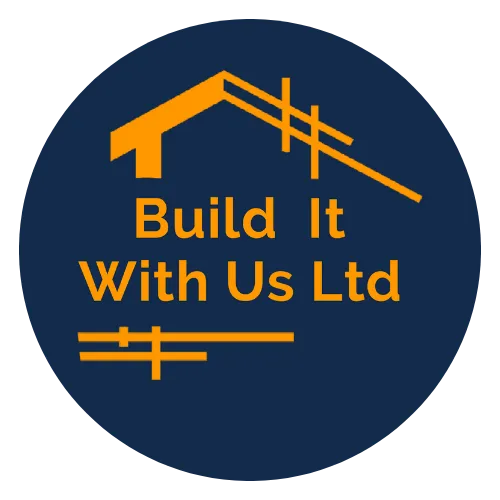Our Blog
Read Our Latest News

Crack the Code: Building Regulations Made Simple
Building regulations can often seem like a complex maze of rules and requirements that leave many
homeowners and potential self-builders feeling overwhelmed. However, understanding these
regulations is crucial for ensuring safe, efficient, and legally compliant construction projects. That’s
why we wrote this guide to make building regulations simple, accessible and easy to understand for
everyone involved in the construction process.
First of all:
What Are Building Regulations?
Building regulations consist of standards and rules that govern the design, construction and
alteration of buildings. These regulations ensure that structures are safe, energy-efficient, and
accessible. They cover various aspects of construction, including structural integrity, fire safety,
ventilation, and energy conservation.
Why Are Building Regulations Important?
1. Safety: Building regulations prioritize the safety of occupants and the public.
2. Energy Efficiency: They promote sustainable construction practices and energy conservation.
3. Accessibility: Regulations ensure buildings are accessible to people with disabilities.
4. Legal Compliance: Adhering to building regulations is a legal requirement in most jurisdictions.
5. Property Value: Compliance can increase property value and marketability.
Ok, still with me? Well, let’s work out how that affects you and your building project:
Key Areas Covered by Building Regulations
1. Structural Safety
Structural safety is paramount in any construction project. Building regulations typically cover:
- Foundation requirements
- Load-bearing capacities
- Roof structure and coverings
- Wall construction and stability
Ensuring structural integrity not only protects occupants but also extends the lifespan of the
building.
2. Fire Safety
Fire safety regulations are designed to prevent fires and protect occupants in case of an emergency.
Key aspects include:
- Fire-resistant materials and construction methods
- Escape routes and emergency exits
- Smoke alarms and fire detection systems
- Fire suppression systems (e.g., sprinklers)
Therefore compliance with fire safety regulations can literally save lives and protect property.
Conversations with your architect should include discussing escape routes from your new property
in the case of fire. Your architect will advise you on where smoke alarms must be fitted.
3. Energy Efficiency
With growing concerns about climate change, energy efficiency has become a crucial aspect of
building regulations. This includes:
- Insulation requirements for walls, floors, and roofs
- Energy-efficient windows and doors.
It’s standard practice to fit double-glazed windows and doors these days, but with the Cumbrian
weather being what it is, you may well want to improve the energy efficiency of your new build
home with triple glazing.
These windows have three sheets of glass and two gaps. The gaps between the glass panes are filled
with air or an inert gas such as argon. The air or gas is completely sealed.
Not only will triple-glazing keep out the bitter winds blowing of the Cumbrian fells in the winter
time, but it will reduce the amount of heat lost through your windows by half. These windows also
greatly reduce external noise from traffic, aircraft and neighbours.
- Heating, ventilation, and air conditioning system standards
If you want to research in detail about the building regulations surrounding systems for heating , you
can click here
- Lighting efficiency standards
Choosing LED lightbulbs throughout your home is an easy way to improve the energy efficiency of
your property. Ask the registered electrician working with Build It With Us on your house build to fit
these energy-saving bulbs throughout your new home.
Energy-efficient buildings not only reduce environmental impact but also lead to significant cost
savings for occupants.
4. Ventilation and Air Quality
Proper ventilation is essential for maintaining a healthy indoor environment. Regulations typically
cover:
- Minimum ventilation rates for different room types
- Natural and mechanical ventilation requirements
- Air quality standards
- Moisture control measures
Good ventilation helps prevent mould growth, reduces indoor air pollutants, and enhances overall
comfort.
5. Plumbing and Drainage
Building regulations ensure that plumbing and drainage systems are safe, efficient, and hygienic. Key
areas include:
- Water supply and distribution systems
- Waste water disposal
- Sanitary facilities
- Rainwater drainage
Proper plumbing and drainage prevent water contamination and protect public health.
6. Electrical Safety
Electrical regulations are crucial for preventing fires and electrical hazards. They typically cover:
- Wiring standards
- Electrical fixture installation
- Grounding and bonding requirements
- Circuit protection devices
Compliance with electrical regulations ensures the safety of occupants and reduces the risk of
electrical fires.
Navigating the Building Regulation Process
Step 1: Research Local Requirements
If you are planning to build on a completely new site in our beautiful Cumbrian landscape, you may
need to have a Wildlife Assessment check carried out on the plot before any works can be
authorised. The Wildlife Assessment Check considers whether there are any protected and priority
wildlife species and statutory designated sites that may be impacted by a development project.
To learn more, click here
To get your building project started, you should contact the Carlisle planning department by clicking
Step 2: Engage Professional Help
Speak with Ross and Mike of Build it With Us. They have been in the building trade here in Cumbria
for over 20 years and will advise you on the latest building regulations. They also work closely with a
qualified architect and building consultant who is familiar with local building codes. Their expertise
can be invaluable in navigating the complexities of building regulations.
Click here to contact them and schedule your discussion
How Much Does it Cost To Submit a Planning Application in Cumbria?
Here is a useful calculator to discover how much it may cost to apply for planning for different
building projects: Click here
Step 3: Submit Plans for Approval
Having commissioned an architect to draw up your plans, they will now require submission to your
local building department for review and approval. This process ensures that your project complies
with all relevant regulations.
Applications need to be submitted through the Planning Portal
Step 4: Building Regulations Regarding Obtaining Necessary Permits
Once your plans are approved, the required building permits will need to be obtained. These permits
give you legal permission to proceed with construction. The next step is:
Step 5: Schedule Inspections
You'll need to schedule inspections at various stages throughout the construction process. These
inspections ensure that the work complies with approved plans and building regulations. There are
no shortcuts here- building regulations insist that each step is compliant.
However, if you commission Ross and Mike at Build It With Us, they will meet with the building
inspectors at each milestone in your build to make sure that your home is in line with building
regulations.
Step 6: Obtain Final Approval That the Build has met Building Regulations
Upon completion of the project, a final inspection is typically required to obtain a certificate of
occupancy or completion. This document certifies that the building complies with all relevant
regulations and is safe for use.
Common Challenges and How to Overcome Them
1. Keeping Up with Changing Regulations
Building regulations are regularly updated to reflect new technologies and safety standards. Stay
informed by seeking professional advice from experts within the construction industry. Build it With
Us ensure that their work is compliant at every step. For more in-depth information, schedule an
appointment by booking into their calendar here
2. Interpreting Complex Codes
Building codes can be difficult to interpret. To overcome this:
- Consult with building officials for clarification Click here to be taken to Carlisle Building Control
- Seek advice from experienced professionals: Built It With Us will advise contact them here
- Use online resources and guides- click here to be taken to this website: https://labcfrontdoor.co.uk
that will help you learn everything you need to know about carrying out improvements on your
home.
3. Managing Costs of Compliance
Complying with building regulations can sometimes increase project costs. To manage this:
- Factor compliance costs into your budget from the start
- Explore cost-effective materials and methods that meet regulations
- Consider long-term benefits of compliance (e.g., energy savings)
The Future of Building Regulations
As technology and environmental concerns evolve, building regulations are likely to change. Some
trends to watch include:
- Increased focus on sustainability and green building practices
- Integration of smart home technologies
- Emphasis on resilience against natural disasters
- Adaptation to changing climate conditions
Staying informed about these trends can help you prepare for future regulatory changes.
Conclusion
Understanding and navigating building regulations is essential for successful construction projects.
While the process can seem daunting, breaking it down into manageable steps and seeking
professional guidance can make compliance achievable.
Building regulations are not just legal requirements – they're there to ensure the safety, efficiency,
and longevity of our built environment.
By embracing these regulations and staying informed about changes and trends, you can create
buildings that are not only compliant but also safe, efficient, and sustainable. Whether you're a
homeowner planning a renovation or a contractor managing large-scale projects, cracking the code
of building regulations is key to your success in the construction industry.
Additional Resources
To further your understanding of building regulations, consider exploring these resources:
- Cumbria Building Control: click here
- National building code organization: click here
-The Royal Institute for British Architects: click here
Remember, while this guide provides a comprehensive overview, building regulations can be
complex and vary by location.
To discuss your building plans for Cumbria, North East England or North West Scotland, contact your
local experts: Build It With Us by booking an appointment in their calendar.
Address
7 Quentin Gardens, Cumwhinton,
Carlisle CA4 8FB

Quick Links
Gallery----
Working Hours
Mon-Sat: 8:30 AM – 5 PM
Sunday: closed

